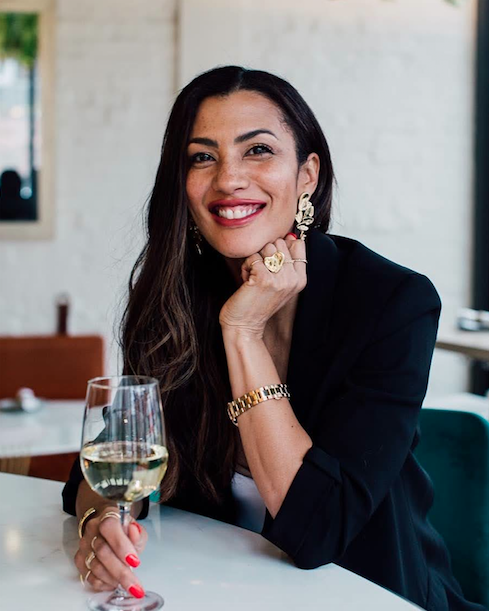Travel can often be a gateway to new perspectives, and there’s no better way of understanding a culture’s values than by exploring its food. Think about the way people gather (or isolate) to eat, the ingredients they use, and the techniques they employ—all indicators of how a culture functions and operates. No one knows this better than Diala Canelo, who spent the last two decades as a flight attendant flying (and eating) around the world, culminating in a collection of recipes featured in her new (and first) cookbook, Diala’s Kitchen. For her, food is a powerful vessel for larger conversations around family, respect, and in some instances—activism.
(Cover photo: Diala Canelo by Lauren McPhillips courtesy of Penguin Canada)
Where does your love of food stem from?
It stems from growing up in a family who treasured meals eaten together, and valued where ingredients came from. Eating fried fish with plantains by the beach with my family will forever be my favourite memory around food. The salty fish (freshly caught) and crispy plantains are still in my memory.
What inspired you to create a cookbook?
The inspiration behind creating the cookbook came from wanting to share not only recipes inspired by my travels around the world, but also the stories surrounding those recipes. I’ve been travelling as a flight attendant for the last 20 years and have had the opportunity to live in three different countries. Travel has been a constant in my life and all my inspiration, when it comes to creating the recipes at home, are influenced by the flavours I get to try in each city I visit.
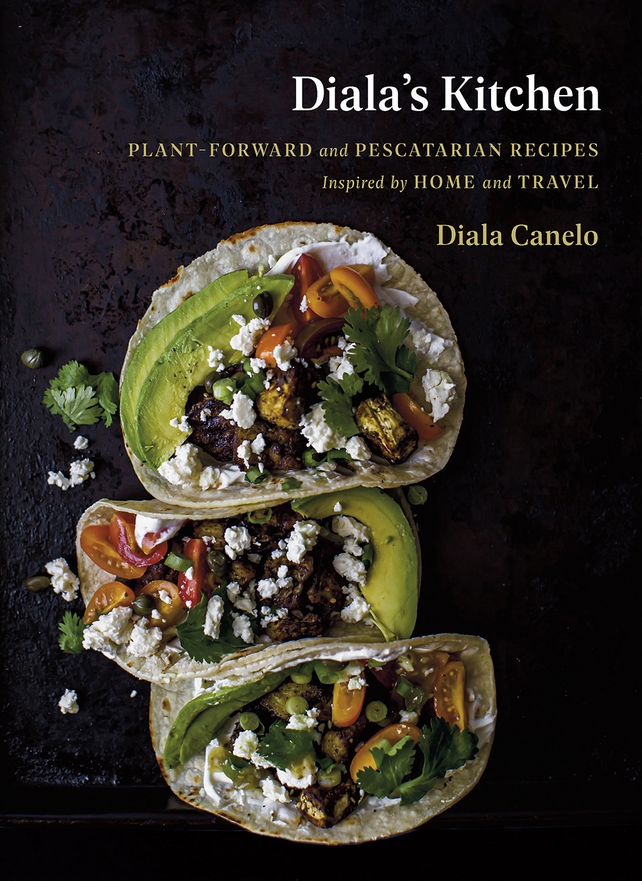

Your cookbook, which is also your first, features over 100 recipes. How did you go about curating and creating such a daunting collection of recipes? What surprised you the most about the experience?
I knew I wanted a book that not only vegetarians and pescatarians would enjoy. From breakfast to dessert, I wanted the readers to have a variety of globally-inspired recipes for every occasion. [The most surprising part] was the immense amount of work involved. I developed and tested the recipes, styled and photographed every photo, and did all the writing as well. The process of putting the book together took over two years.
RELATED: 13 Canadian Wines You Should Try Immediately
Do you have a favourite recipe in the book?
If I had to choose one, it would have to be Asopao de Camarones. It is a Dominican dish, similar to risotto, that’s tomato-based, studded with shrimp, and spiced with cilantro. It’s the first dish I eat as soon as I go back to visit my family in the Dominican Republic and it brings up many memories of growing up on my sunny island.
What has been your favourite memory or experience putting this labour of love together?
It has definitely been having the support of my family during the entire process, as well as working on recipes while I was overseas visiting some of the cities that inspired them
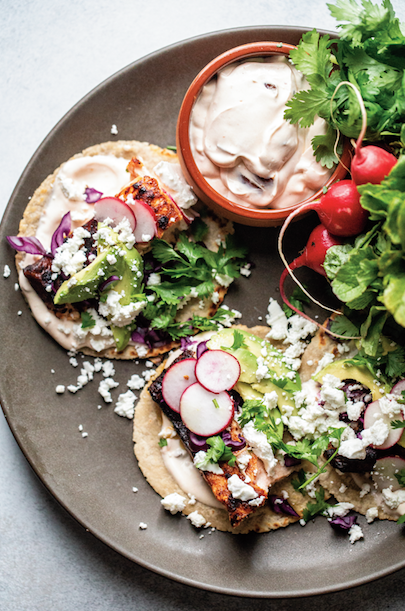

Much of the inspiration in your cooking is inspired by your travels. What is the most memorable dish you had while traveling that you can’t wait to eat again?
That dish would be a roasted Baladi eggplant with tahini, balsamic, and tomato purée I had in Jerusalem. It had such an impact because the dish was utterly simple with just a handful of ingredients, but had so many layers of flavour. Being surrounded by friends at the top of one of the largest markets in Jerusalem made the experience unforgettable.
On your travels, what have you learned about people through experiencing their food? What does a culture’s cuisine say about its people?
I’ve learned the best way to know a city and its people is through food, through gatherings, and through conversations at a market. Our love for food is universal and a culture’s cuisine says quite a lot about the things that people value, like the importance of time spent at a table eating [with your] family.
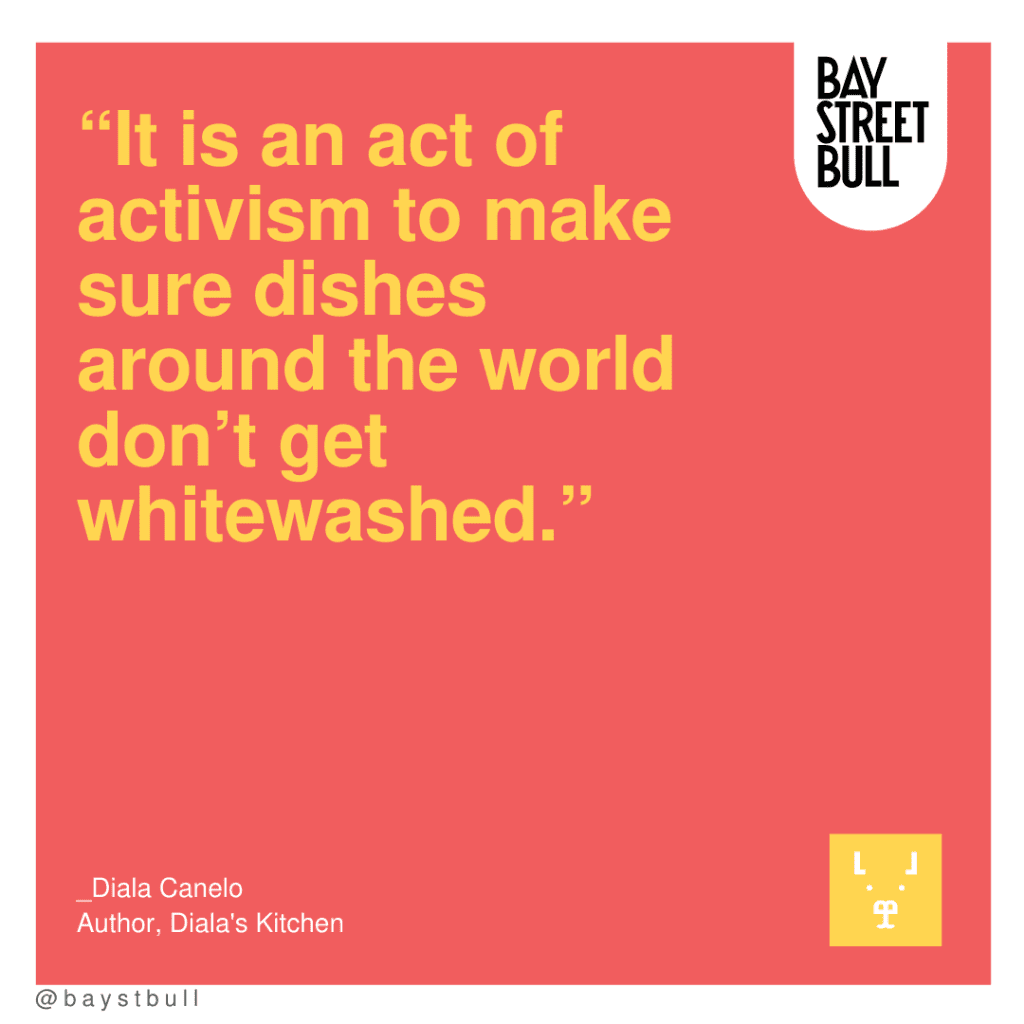

How do you think your experiences growing up in the Dominican, and living in cities like Mexico City and Toronto have shaped your worldview of cuisine and culture?
Living in different countries has entirely shaped my views about food in general. I come from a culture that values farmers, agriculture, and sustainability. We show love through food, so there is a lot of importance to eating meals together.
Moving to Mexico City showed me how traditions get passed from generation to generation (especially when it comes to food), and how integral certain ingredients are as the base of every dish. Living in Toronto has gifted me with its wonderfully vibrant food scene, one that is as multicultural as it gets.
RELATED: The New Wave of Canadian Plant-Forward Restaurants
Do you think food can be an act of activism or protest?
I think when it comes to food, especially food from other countries, it should be given the respect it deserves and not made palatable for others to understand. An example of this would be curry. There have been publications calling curry a stew. Curry will never be a stew, it is a curry and should be kept that way. It is an act of activism to make sure dishes around the world don’t get whitewashed. [For me, it is about] making sure that I share Dominican recipes. I have travelled all over the world, but making sure that I share food from my own country—a country that was built by the African diaspora—is very important to me.
What does ‘breaking bread’ mean to you?
It means the joy of [eating] a meal together, preferably a very simple meal, made with a lot of love.
RECIPE
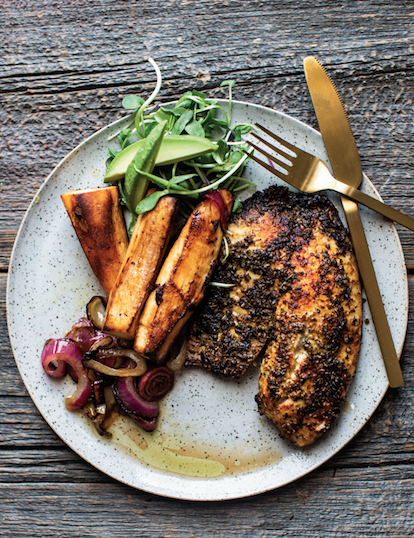

Blackened Fish Over Yuca Fries
Serves 2
“Growing up in Dominican Republic meant that on the weekends my family would go to the beach. Usually, lunch would be blackened fish with yuca fries. Garlicky, crispy, and so tasty! Since then, this simple yet utterly delicious meal always brings back memories of those carefree days spent on the beach with my family. Today, that same crispy blackened fish, seasoned with garlic and oregano, is a staple in our home in Canada. The marinade infuses the fish with a zesty flavour, and once the fish is served with fried onions and crispy yuca fries, then you are in for a true taste of a Dominican classic.”
Ingredients
-
2 skinless tilapia fillets (6 ounces/170 g each)
-
6 tablespoons (90 mL) extra-virgin olive oil, divided
-
Juice of 1 lime
-
½ teaspoon (2 mL) dried oregano
-
1 teaspoon (5 mL) ground coriander
-
1 teaspoon (5 mL) sweet paprika
-
1 teaspoon (5 mL) sea salt, divided
-
1 teaspoon (5 mL) pepper, divided
-
1 large yuca root
-
½ red onion, thinly sliced
-
1 clove garlic, finely minced
-
½ lemon
-
1 avocado, pitted, peeled, and thinly sliced
-
1 cup (250 mL) loosely packed microgreens
Directions
-
Preheat the oven to 375°F (190°C). Line a baking sheet with parchment paper.
-
Place the fish fillets in a shallow baking dish. In a small bowl, combine 2 tablespoons (30 mL) of the olive oil, lime juice, oregano, coriander, paprika, ½ teaspoon (2 mL) of the salt, and ½ teaspoon (2 mL) of the pepper. Whisk until blended. Pour over the fillets and let marinate at room temperature for 10 minutes.
-
Meanwhile, bring a medium pot of water to a boil. While you’re waiting for the water to boil, peel the yuca, cut it in half lengthwise, then cut each half into thick wedges. Boil the yuca until the wedges are slightly soft (test with a fork), about 6 minutes. Drain the yuca wedges and transfer them to the prepared baking sheet.
-
Toss the yuca wedges with 2 tablespoons (30 mL) of the olive oil and the remaining ½ teaspoon (2 mL) salt and ½ teaspoon (2 mL) pepper. Spread in a single layer, leaving a bit of space between the wedges, and bake until crispy and golden, about 20 minutes, turning halfway through.
-
Meanwhile, in a medium frying pan, heat 1 tablespoon (15 mL) of the olive oil over medium-high heat. Place the fillets in the pan (discarding the marinade) and cook until golden brown and crispy, about 5 minutes per side. Transfer to a plate and cover loosely with foil to keep warm.
-
In a small frying pan, heat the remaining 1 tablespoon (15 mL) olive oil over medium heat. Add the onions and fry until soft and translucent, about 5 minutes. Add the garlic and cook, stirring constantly, for 30 seconds. Remove from the heat.
-
To serve, place a fillet on each plate, and add yuca fries and fried onions on the side. Squeeze lemon juice over the fish and fried onions. Enjoy with a few slices of avocado and microgreens on the side.
Tip Yuca is the root of the cassava plant. It has a rough bark-like skin that must be peeled before cooking. Once cooked, its texture is similar to that of potatoes, and it has a mildly sweet flavour. It’s also delicious when mashed. You can find it in the produce section of most grocery stores.


